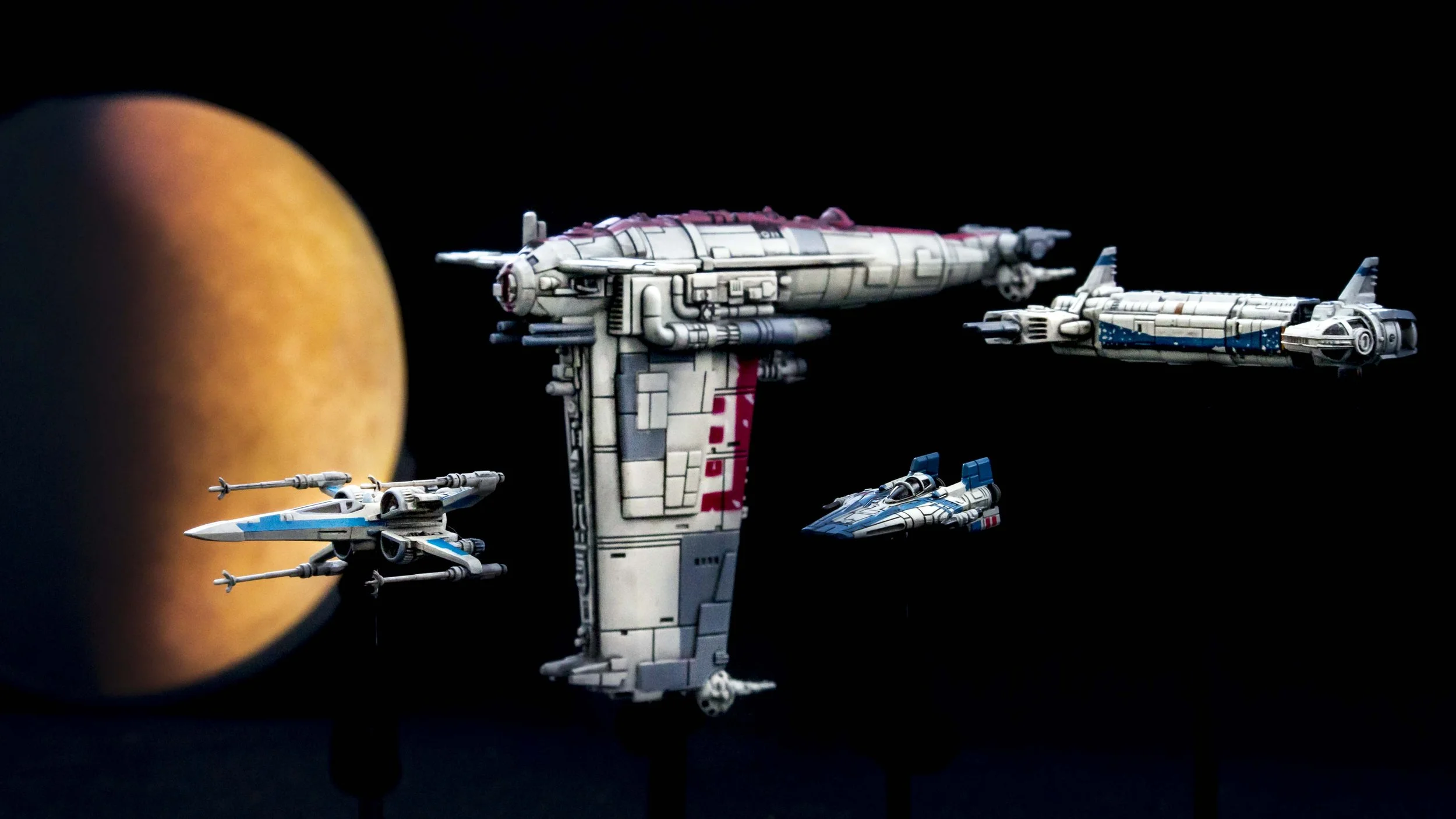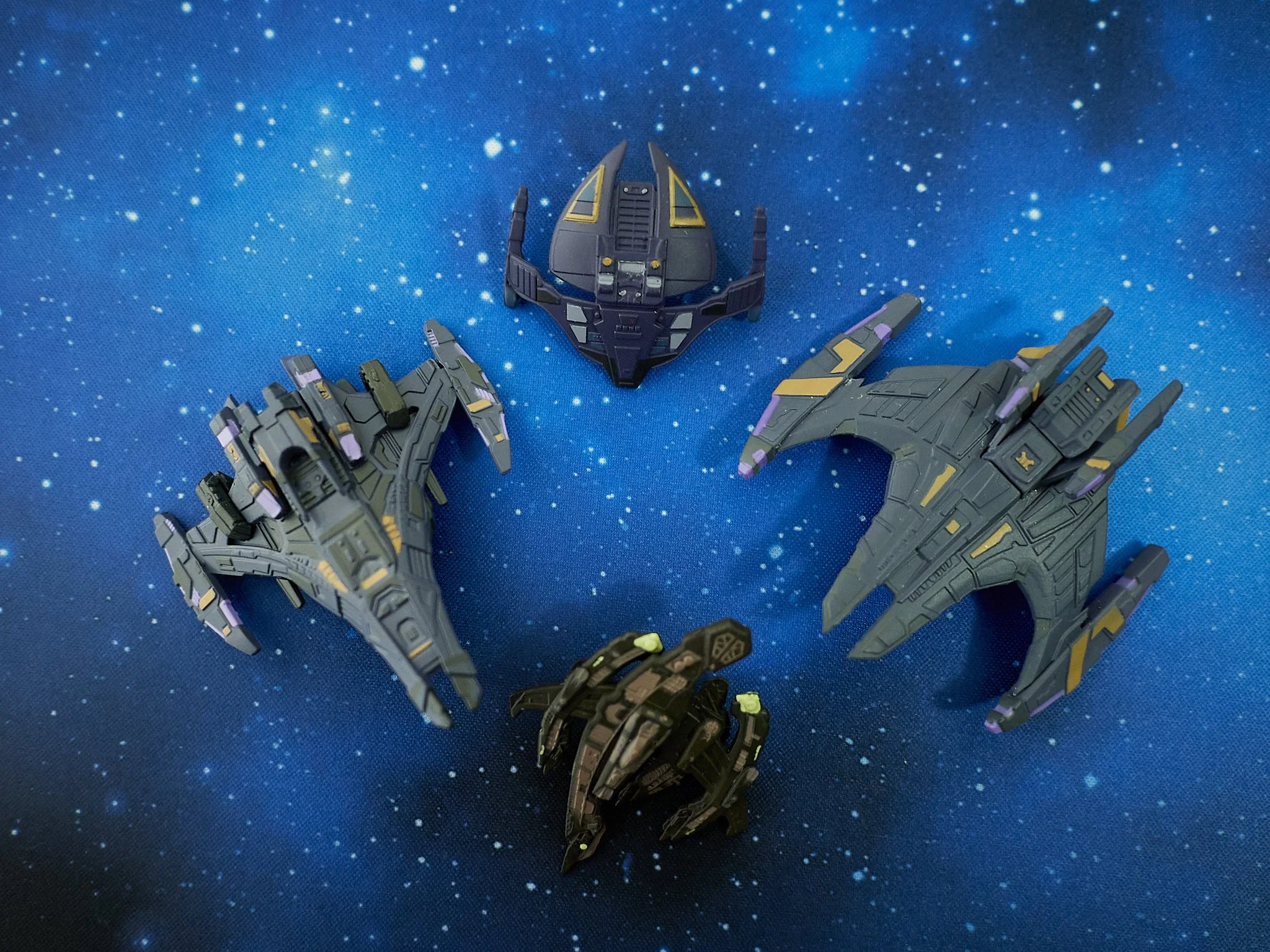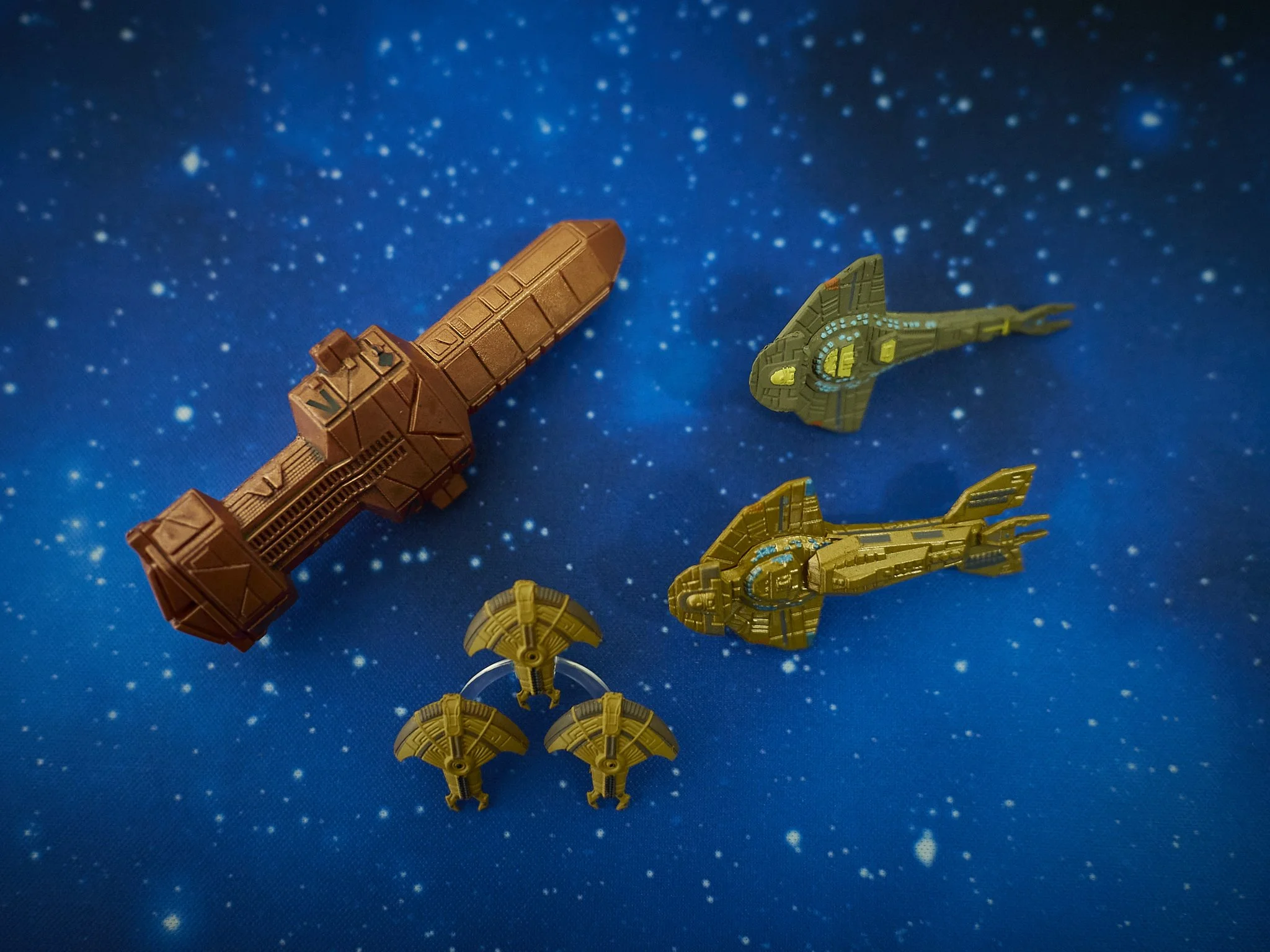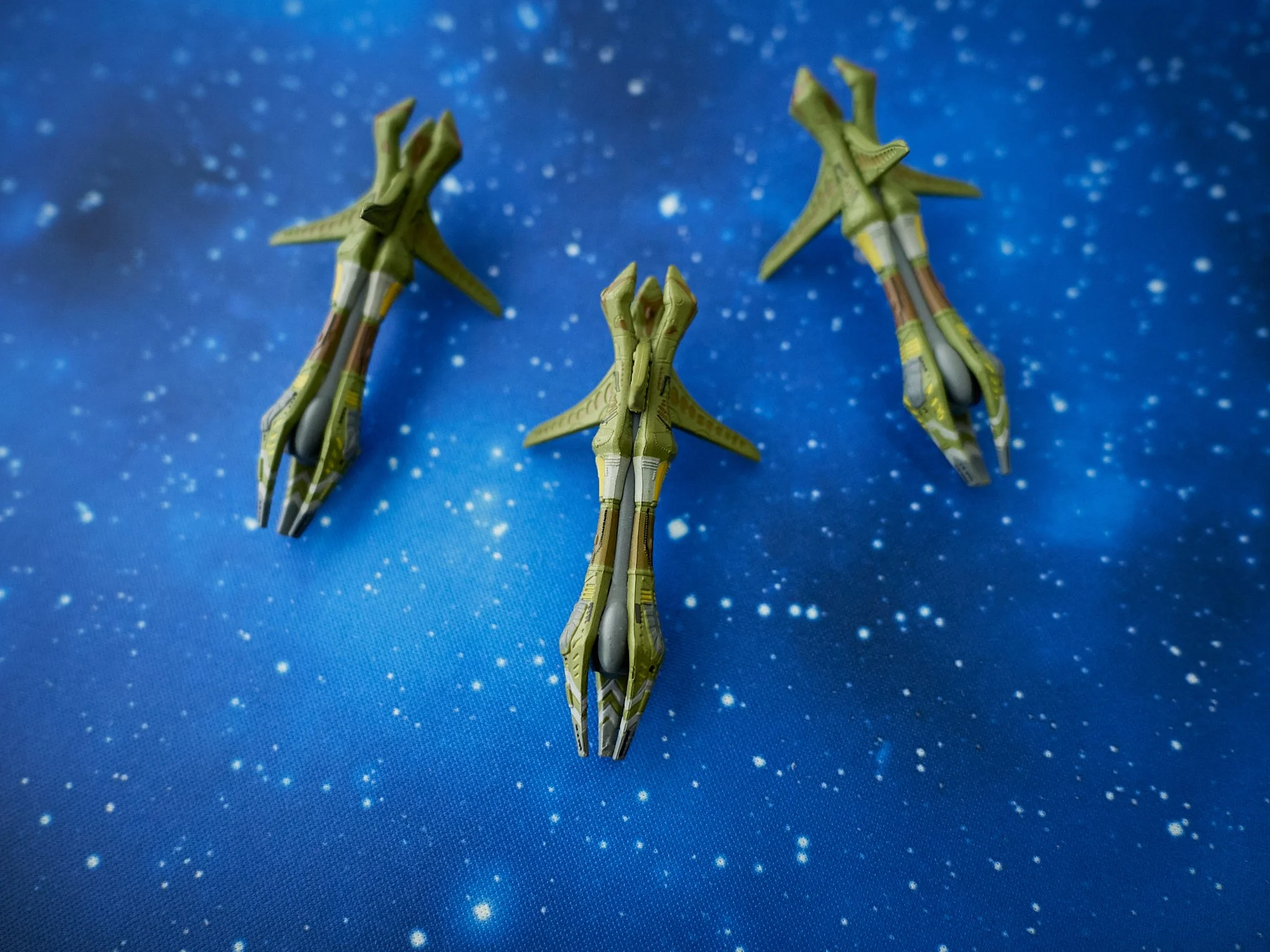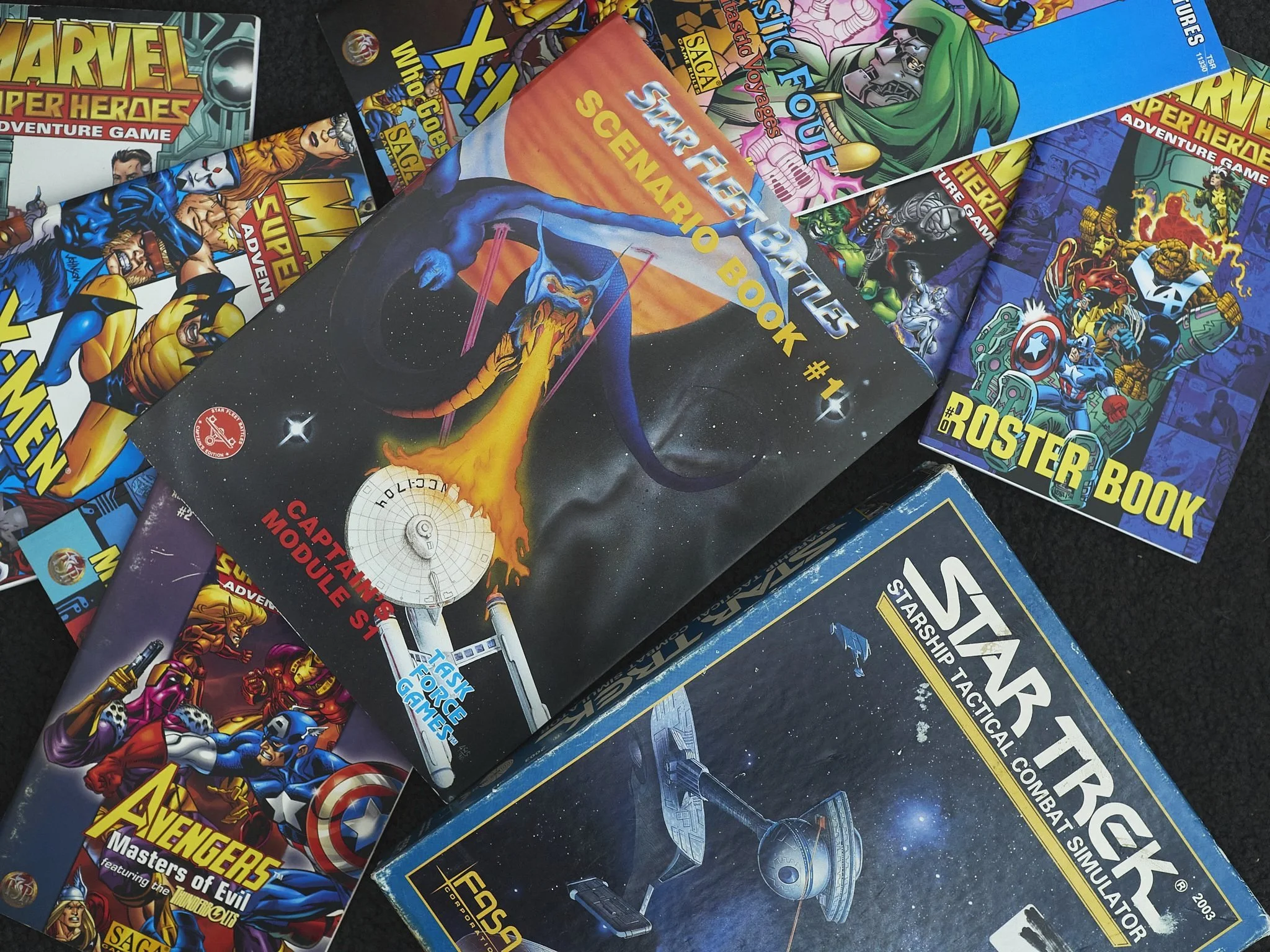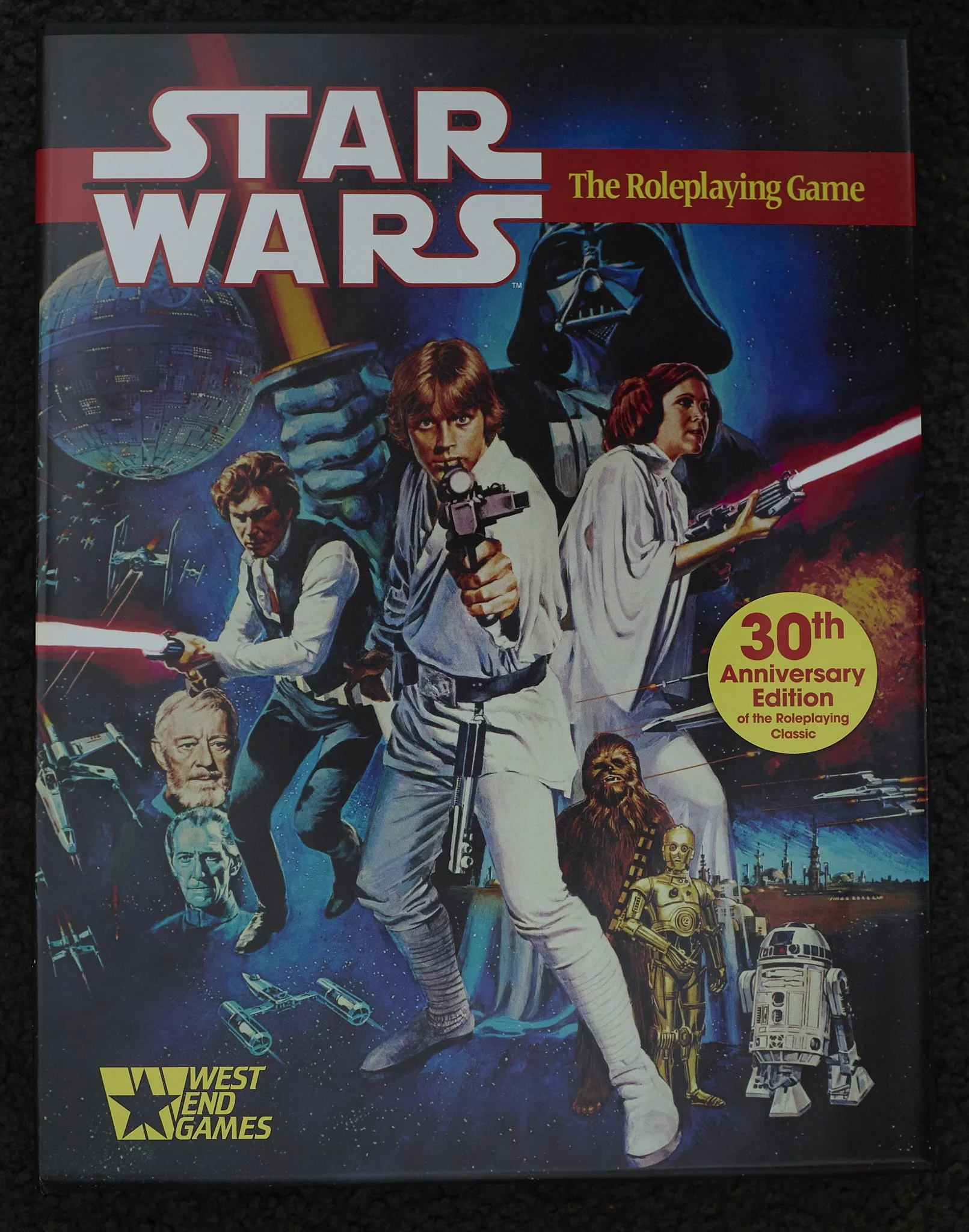I often use the term rock-paper-scissors when taking about the elegance of the first edition X-Wing game. I am talking about the core elegance, not the out of control layering issues the game had towards its end.
What I mean by that is the base game uses a series of ship characteristics and capabilities that are balanced out against a attack-defence-manoeuvre dynamic, which are all a few contained layers of supporting extras.
I will illustrate this better with the evolution of the second edition of the game as my proof of concept.
The games basic principles seems to have two levels.
I will call these core-cannon or “logical” and game-centric or “illogical”.
The logicals are;
The Ship
As it sounds. the ship has a manoeuvre dial, an action bar, upgrade slots all based on Star Wars cannon. fast ships are fast but fragile, tough ships are slower, some ships are weapons platforms, others run bare bones.
The designers did a very good job in the earlier game of keeping these balanced and relevant to both the game and the feel of Star Wars.
The Imperials are generally fast, agile and fragile, or brutish and cumbersome. Rebels are the all-rounders and the Scum bring their bag of tricks to generally less advanced feeling ships. The Kihraxz, X-Wing and Tie/Advanced are good examples of this, each faction holding true to this base line.
In 2e all ships were placed on a more equal footing, removing the early release ship-later release ship game imbalance and have generally more Actions and more logical ones.
The Pilot
The pilot adds the all important skill value that determines initiative and if decent enough also a talent. Like the ships, there seems to be a lot of thought put into these, each pilot having the one unique thing that makes them stand out and fits their resume. Most exceptions to the game concepts that I like most are pilot talents and even The Force (Vader/Luke etc) or Robotic efficiency (Guri) are decently represented.
In 2e these stayed much the same, often changed only to suit the newer games mechanics or fix unforeseen issues, but Force was made an upgrade, robotic characters were handled differently and some glaring issues were fixed.
Crew
Like Pilots, Crew are the secret sauce that allows exceptions and character into the game. Han and Chewie, Jan and Kyle, Lando and Nien, Palpatine and a pack of killers, all add special abilities that sometimes synergise best with the Pilots we most associate with them.
Like pilots, in 2e Crew make a little more sense and fit the mechanics better, but the dynamic is the same.
Droids/Illicit/Systems
These are the factional or specific ship break-out upgrades that make certain ships stand out and tend to reinforce factional and design age differences. Illicit allow the Scum to add enormous variety to their otherwise similar ships. Systems allow the “new breed” to directly effect core game concepts and Droids are the Rebel pilots “fix it” option, the Scum also getting a small choice here. We allow the Tie Advanced the Advanced Targeting Computer Systems upgrade, but at full cost only.
Reduced and streamlined in 2e, many of the later additions are factored in to the ships as is.
One is cheap, fast and agile, the other has advanced features, can load up a lot of ordnance and has some tricks. All have their place.
Ordnance
Weapons add more punch than standard ships usually have, some considerably more, but they are limited and often one-use or very expensive. Being optional, it is often a matter of loading up a single death-basket, spreading the love/hate or even going ship only, with a different plan in mind like distraction. An optional rule in our games is to hide upgrade cards until used, so you could field a Tie Bomber, load it high with…..bluff, then use it as a blocker, while hitting your opponent with something nasty from left field.
Reduced and streamlined in 2e and some of the really over powered ones are gone or blunted.
The illogical* levels are;
Modifications
I really struggle with these as I feel they take away the clean uniqueness of the ships and sometimes the Pilots also. If a ship cannot do something, then leave it at that. If a Pilot can offer an exception, then take that as the special little snowflake it is. As an example, with Vectored Thrusters every small ship can Barrel Roll, so that becomes a “so-what” or more dangerously a “mad if you don’t” option, effectively re-designing most of the ships as made.
To add to this, in the later game, some of these made others redundant or confused things, many were cost “0”, so a mandatory build and a few just felt like they were a patch.
These are still in the 2e game, but a little better handled and some of the crazy ones, the poor fixes and odd choices are gone or built right in to the core ship.
Elite Pilot Talents
Same as above. You have superior Pilots with superior abilities, then offer similar skills to all those Pilots again, either allowing for an exaggeration or a negation of the Pilots special-ness. From a game perspective EPT’s were often the build defining super upgrade that had a tendency to break balance and one of the upgrades that 2e severely restrained.
Heavily reduced in both power and availability, these are more logical to add to Pilots as a one-off trick of squad tactic, but I still dislike them.
Titles
These come in two forms, named and generic. The named ones are basically Mods outside of legal, or “ghost ship” extra abilities attributed to the thing that makes ship “X” special like the Falcon gaining Evade, which I would have thought was down to the Pilot and Crew. Generics are even worse, often only existing to fix game balance issues that other upgrades introduced.
Generic Titles were basically internal game system upgrades or fixes for them.
It is interesting to note that all three of these in particular have gone in a very different direction in the second edition game. There are named Titles, usually making more sense, but the generics are no longer needed so are dropped. Most changes absorbed into the 2e ships.
The last is Tech, which not bad by design, just limited to later ships, so irrelevant basically.
Examples;
The Tie Interceptor in this most basic version of the game** is the only ship that has all three of the manoeuvre based actions available (Boost, Roll, Evade) as well as speed white 5, pilots that tend to hero these and a huge array of green moves. It is fragile with no shields and has no ordnance options or Target Lock***. It is the Shrike.
The A-Wing is even faster, the fastest ship in the game, has the TL action, but looses Barrel Roll, so one in-one out. One pilot has the Roll Action as their unique thing, being all the cooler for it, being one of the few ships in the game with all five Actions. It has Ordnance and shields and lots of greens moves. It is the Sparrow Hawk.
The Tie Advanced is like the A-Wing, just not as fast losing the Boost action, but has Roll, TL and Evade (see the dynamic here of four actions-always including Focus-but never or rarely all five). It also has Missiles, so it is like the A-Wing, but more about re-positioning than speed. It is the Eagle.
The Scum generally lack speed, but gain slipperiness and tend to trade off Shields for more Hull. Using the Star Viper as an example of an Interceptor style ship, you get speed white 4 with Boost, Target Lock, Roll and S-Loops (Dalan gets the Talon Roll) with Torpedoes. Slower but trickier.
Patterns form and balance is retained, mostly and that rock-paper-scissors thing comes out. Unlike Chess, the game has some built in variety, but not too much and perfect balance is boring.
The manoeuvres, actions, upgrades and pilots of this paired down game still give the player almost unlimited options within a 100 point squad. As a game it is sound and deep, as a simulation, cannon is adhered to. What they do not do is allow a multiple stacked Action economy to rule.
As an added variable we allow both main factions to “hire” Scum, but as Scum are also broken into sub-factions (and un-aligned), they are limited to a main and one other.
Actions are an intrinsic part of the game. They are often the advantage some ships and better pilots have or take away from others, but in the later 1e meta, stacking Elite Pilot Talents, Mods, Titles with the above meant that more actions won the game, all else became increasingly irrelevant.
The fix for this was basically 2e, with the benefit of hindsight.
The beauty of the simpler game is the ease with which it’s different game elements work together and the power of the exceptions. This was the core idea of the game in the first place and it was brilliant.
The Y-Wing for example looks pretty boring in 1e, but it is cheap and has a Droid, Turret and Torps, so it’s role as stable weapons platform that needs an escort is retained. Plenty there from a squad perspective and no other ship is startlingly better overall.
“Hey guys, looks like they want us again”.
Darth Vader with two Actions is the stand out as he should be, elegantly mimicking his Force power.
The layers of ship > Pilot > (limited) upgrades > team building make for a great game, a sensible and easily grasped game, but like Chess, easy to teach does not mean easy to master.
A new player has all they need to remember in front of them, without needing to be aware of game breaking and illogical combinations more experienced players may employ. Build a squad from ships and Pilots, add the odd upgrade, and go. More experienced players will have an advantage, but not an extreme one.
It comes down to play on the table, not the mini game that is tournament squad building. This is roughly where the second edition of the game was going-more flying, less game breaking.
Some ships and pilots that tend to be forgotten also come back into consideration.
Thweek with his Mimic and ID-88D Crew can shake things up often being the only way a ship can do something it cannot.
Pilots who can subvert the core game mechanics are also notable, like Tycho who ignores Stress for Action use, Kaa’to who steals Actions, Manaroo who shares them, Targeting Mechs that allow TL’s after red moves (making Y-Wings more adventurous), Soontir Fel who gains a Focus when stressed, or Guri who gains one when at Range 1 (being a calculating robot assassin thingy).
The thing I like most in these games is the feeling of things making sense, of feeling right. Feeling Star Wars like I remember I felt in the theatre in the 70’s.
I guess the argument could also be made for even more options to be allowed, but then it would get harder to balance, harder to master and more expensive I guess.
Not sure I got my point across fully, but the X-Wing 1e game with some upgrades removed and only the ships with the basic four Actions, provides for a logical, balanced and fun experience that avoids all the pitfalls that broke the game and forced the second edition into being.
*
In my perfect universe, the Pilot and ship would be separate with large and small ship skill (or a limit like Luke = Rebel/small, so as to avoid silly mixes like Attack Wing) and Pilots could have more than one natural “talent”, teams could have a tactic option rather than EPT, upgrades would be less limited, maybe a budget of space, or getting increasingly expensive or they are active/inactive, which is something we allow for Attack Wing games, the ability to buy more upgrades, but only have upgrades equal to upgrade icons “active”. This allows Kirk to choose which of his clever tactics he wants to select from, not have to decide pre-battle which to leave on the shelf, but he still has to pay for them.
*Things that are there for the game not the back story.
**In most of the various limited version of X-Wing, we remove the main culprits often abused of game breaking and gamesmanship or poor attempts at game balance, EPT’s, Mods and Titles.
***In our paired down versions of the game with no EPT’s or Mods, no ship has all the Actions.


